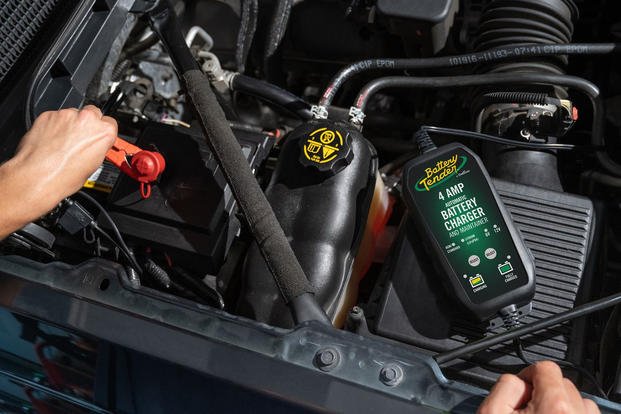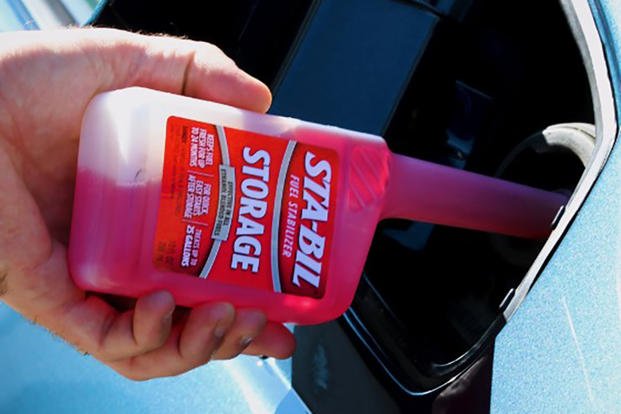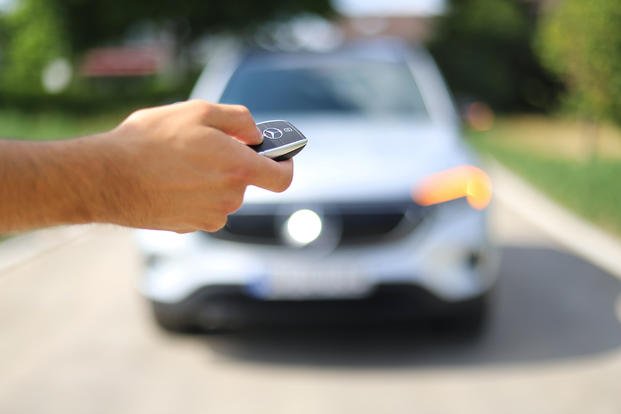The final weeks before deploying are a hectic time. You might be ending a lease, putting belongings in storage and making arrangements to take care of your family while you’re gone. The whole time you’ll be running errands in your car, and it can be easy to forget that you have to do something with your privately owned vehicle, or POV, while you’re gone, too. This is the time to figure out what to do with your car while you’re deployed.
Now that the Army will no longer store your car while you’re deployed, there are fewer options than there used to be, and you’ll have to be more proactive about taking matters into your own hands. You can pay for storage out of pocket, leave your car with someone you trust or get rid of it altogether. There are things to consider with each option, so we’re making life a little easier by breaking them all down so you can make an informed plan and come home to a car that puts a smile on your face, not a strain on your bank account.
Put Your Car in Storage

One of the easiest options is to put your car in storage while you’re deployed. Find a storage facility that offers covered long-term parking, sign a contract and be done with it. Make sure you inspect the property and determine whether it’s a safe place for your vehicle. Put your bill on autopay so you stay on good terms with the people in possession of your car.
Cars can develop problems if they sit unused for too long, though, so you will need to take a few precautionary measures before you throw the transmission in park and skip town for several months.
When tires sit in one place for too long, they can settle and develop flat spots. That doesn’t mean the tire is underinflated (although that can happen, too); it means the tire is no longer perfectly round and you’ll feel a jarring thud every time the flat spot hits the road. The best way to prevent this is to put your car on jack stands so the tires aren’t bearing the weight of your car. If that’s not an option, at least air your tires up to the recommended air pressure to minimize flat-spotting.

Every time you drive your car, the alternator charges the battery. If your car sits in storage for too long without being maintained, the battery will die even though the car is never turned on. Batteries are expensive and annoying to replace. If you can, safely remove your car battery and store it indoors. If you leave the battery in your car, you might be able to carefully disconnect the negative terminal to isolate the battery and prevent it from leaking power into your car’s electrical system over time. If your storage facility has nearby power outlets, you may be able to install a maintainer like a Battery Tender to keep your battery fully charged. Always check to make sure whatever method you use is safe for your particular car and battery.

Like batteries, gasoline will go bad over time -- sometimes in as little as 30 days. It’s not great when that happens in your gas tank, but it can become an even more expensive problem if it happens in your fuel lines or injectors. To prevent this, pick up a bottle of fuel stabilizer such as Sta-Bil. Read the instructions on the bottle to determine the right mixture of stabilizer and fuel, then add the correct amount to your gas tank. It’s best to do this when the tank is nearly empty, then fill it up all the way so the fresh fuel will mix with the stabilizer thoroughly. Drive your car a few miles to flush the treated fuel all the way through your injectors, then enjoy peace of mind knowing your car will run smoothly when you get back from deployment.
Finally, take steps to keep critters from moving into your car while you’re deployed. Remove all traces of food (even crumbs and empty wrappers) and put some kind of mouse deterrent in your car. The last thing you want to come home to is an infestation of mice that have turned your seat padding into nests and your car’s wiring into chew toys.
Since your car isn’t going to be driven while you’re gone, you can save money on car insurance by letting your car insurance company know the dates when it won’t be on the road. Where you store your car might affect your reduced rate, so be prepared to answer questions about things, such as whether the car is under a roof and if the facility has a gate and security cameras.
Leave Your Car with Someone You Trust

Many people prefer to take a free alternative to storage and leave their car with someone they trust while they’re deployed. This could be a spouse, parent or close friend, but there are risks involved with this, and anything that happens to your car while you’re gone is ultimately your responsibility and could ruin a relationship -- not to mention your financial stability.
Before you hand over the keys, think carefully about who you leave in control of what is presumably your most expensive possession. Are they a responsible driver? Will they be moving or traveling for long periods of time while you’re gone? Do they have a secure place to park your car?
If you leave your car with your spouse, check the title to make sure both of you are listed as its owners. If something happens to your car or you agree to sell it, your spouse could run into problems if you are the only owner listed on the title. You can create a power of attorney with the help of your base’s legal office to give anyone legal authority over your car, but be very cautious about handing out that kind of access.
As always, you’ll still need to maintain insurance on your vehicle. Make sure you and whoever you leave it with understand what each person’s insurance will cover if something goes wrong.
One upside of leaving your car with someone is that it will get driven while you’re gone. Even driving it once a week can keep the battery charged, fluids flowing and seals from drying and cracking. Assuming nothing goes wrong, that can save you money on repairs when you get home.
Sell Your Car Before You Deploy

If you’ve been contemplating selling your car, this could be a convenient time to get it off your hands. By getting rid of it before you deploy, you’ll avoid the costs and natural deterioration associated with letting a vehicle sit idle for several months.
You’ll get the best price for your car by selling it yourself, but that takes time and assumes more risk on your part since you’ll be handling payment and title transfer. Selling to a dealership is easier as long as you’re willing to take less money to make room for the dealership’s sales margin. Don’t be shy about shopping around, either. You’re entitled to accept offers from multiple dealerships and take the best deal. Some popular places to sell used cars are CarGurus and CarMax.
With your old car gone, you’ll have less to worry about while you’re deployed. There will be no insurance, no storage fee, no mouse nests, no lapsed registration and no worrying about whether or not your friends or family are keeping up with maintenance while you’re gone.
When you get home, you’ll be able to start fresh, ideally with a sizable down payment from your deployment pay.
The uncertainty in this case centers around an unpredictable car market. What’s in your budget right now might be significantly more expensive when you come home in need of a car right away, so that’s something to keep in mind.
Want to Know More About the Military?
Be sure to get the latest news about the U.S. military, as well as critical info about how to join and all the benefits of service. Subscribe to Military.com and receive customized updates delivered straight to your inbox.











